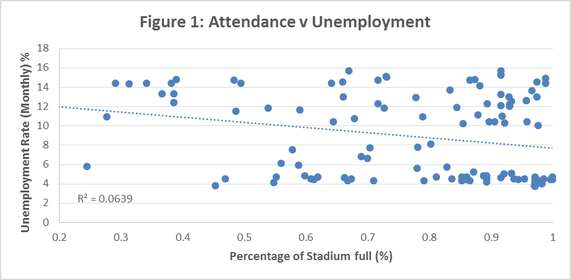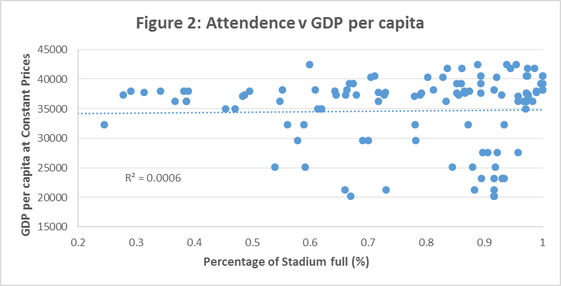Debate has raged over the last number of years in regards to the poor figures of fans coming to see ‘The Boys in Green’ play in the redeveloped Lansdowne Road. Numerous theories have been put forward as to the reasoning behind these turn of events. The economic downturn, which resulted in declining disposable income and increasing levels of unemployment, the ticket pricing policy adopted by the FAI, and the growing popularity of other sports, mainly rugby.
These are all reasons put forward as factors influencing football attendances in an Irish context. In sports economics, numerous studies have been conducted to analysing the determinants of football match attendance. One of the most noted is the work of Garcia and Rodriguez (free version of earlier paper available here) who examined Spanish First Division Football League (La Liga) games. Their model included variables which accounted for numerous influences, including economic conditions and match specific factors. They found that quality of the two teams had the highest effects on attendance e.g. better teams attract bigger crowds.
Unfortunately, when it comes to making accurate attendance figures available, the FAI aren't extremely reliable, as noted by Emmet Malone (here). However, in a two part piece I’ll attempt to address how measures of income, unemployment, Irish footballing performance, opposition quality, and match uncertainty have on attendance figures. It should be noted that these attendance figures aren’t entirely robust, as ideally it would be beneficial to have data directly from the FAI. Data has been collected for all Irish senior Internationals played at the Old Lansdowne Road (from Ireland v Lithuania 8/9/1993), Croke Park and the Aviva Stadium (up to Ireland v Poland 29/3/15). Where data is missing the observation is dropped e.g. FIFA do not recognise Gibraltar, therefore they are not included in the study. Given the move to three different stadiums during the period, as well as the fact that capacity can be constrained due to friendlies and competitive matches – particularly in the Old Lansdowne Road, attendance is measured as a percentage of capacity rather than total numbers.
Economic Factors
Figure 1 and 2 examine how both the standardised monthly unemployment rate, and GDP per capita have effected attendance.
A further piece in the coming days will examine these variables, as well as drawing some conclusions on what is influencing Irish International attendance patterns.
Sean O'Connor is a Research Assistant at the Department of Economics, University College Cork.


 RSS Feed
RSS Feed